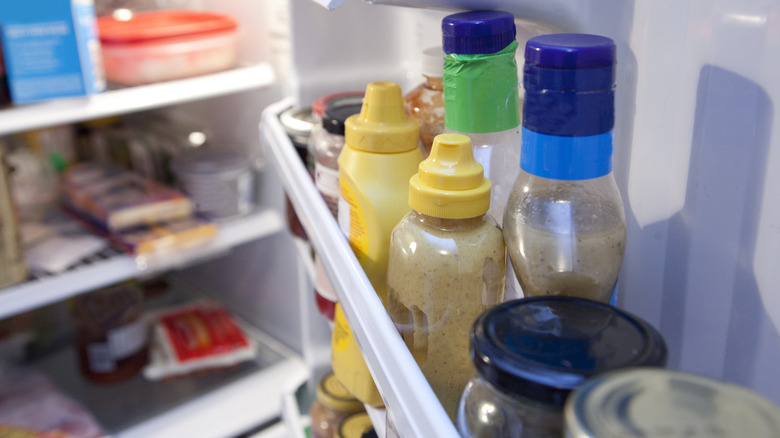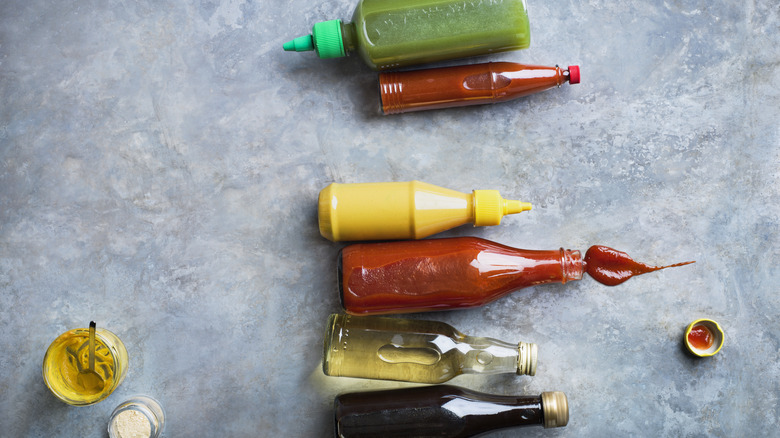You Might Be Refrigerating The Wrong Condiments, But We're Here To Help
If you happen to have some hot sauce chilling in the fridge while a bottle of opened strawberry marmalade quietly sits in the corner of your pantry, you might be storing condiments all wrong. But don't fret — there is logic that governs which condiment goes where, and we're here to help.
When it comes to storing condiments, the general rule of thumb is that anything which consists of perishable ingredients such as dairy and eggs should be kept in the refrigerator. Even items that contain fresh fruits or vegetables, like jams, preserves, and jellies, belong in the refrigerator after opening. That means, the next time you open a bottle of Caesar dressing to drizzle over your grilled chicken Caesar salad, it's a good idea to stick it in the fridge.
Condiments like mayonnaise and ketchup are a little more tricky. There are contrasting beliefs regarding how to store these popular items, but if you want them to say fresh for as long as possible, it's advisable to refrigerate them. Granted, this might seem counterintuitive because these are often sold at room temperature in the store, but refrigeration helps preserve their freshness. For instance, American favorite, Hellmann's mayo, will stay fresh for a month at room temp once opened, but it will last twice as long if popped in the fridge.
So which condiments don't need refrigeration?
Condiments that contain natural preservatives such as salt, sugar, and acid are suitable for storing on the counter, like fish sauce, vinegar, and soy sauce. These will not spoil at room temperature. That said, their quality can deteriorate over time, so if you don't go through such condiments quickly, it may be a good idea to refrigerate them regardless. Doing so slows down the gradual decline of flavor and color.
It's always a great idea to glance at the ingredient list on the back and look for any perishables, like dairy, eggs, or fruits, that might need more care. Most condiments will also mention the best before date along with instructions for storage practices. This doesn't apply to any condiments made at home from scratch as they won't have industrial preservatives and will go bad much quicker than their store-bought counterparts. These are best stored in the refrigerator regardless of whether or not they contain perishables.
If you're wondering how to accommodate so many condiments in such a small space, the trick is to store pantry-stable items like soy sauce in the fridge door where the temperature is warmer and prone to fluctuating. On the flip side, place more sensitive condiments such as ranch dressing deeper within the fridge — at the back of a shelf — where it's colder. And when in doubt, always check for signs of spoilage when you open condiments. If there's an odd, sour smell, mold, or any obvious discoloration, it's time to bin the bottle and buy a new one.

